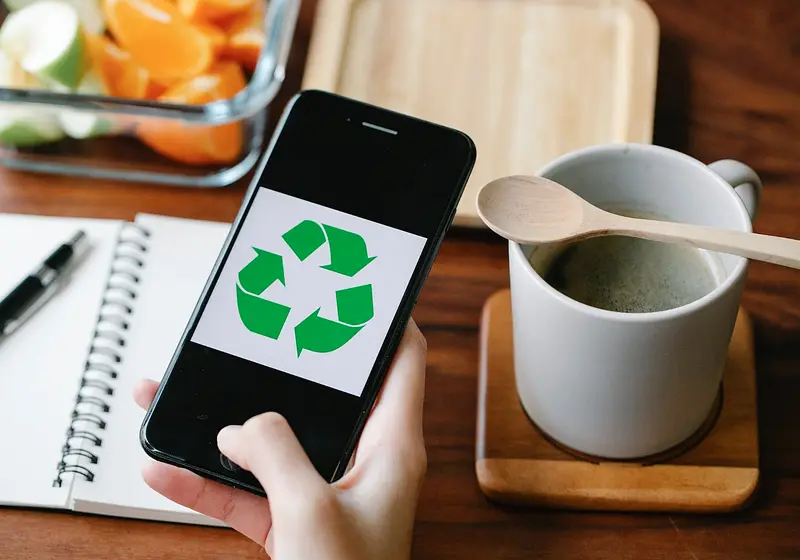Ever thought about how bingeing your favourite show or endlessly scrolling TikTok might affect the planet? It might surprise you, but each click, scroll, and video stream consumes energy — a lot more than you realize. Even though the internet feels invisible, its functioning is powered by massive data centers that devour vast amounts of electricity.
Fortunately, there is a solution: a movement called sustainable web design, and it can reduce this hidden energy consumption. Here’s the connection between the way you spend your digital days and environmental sustainability, and what you can do to help.
A standard email generates about 4 grams of CO₂ emissions. However, emails with large attachments can produce up to 50 grams of CO₂. - Céline Deluzarche and Marie Pireddu
How the Internet Uses Energy
Whenever you search on Google, watch something on Netflix or upload a picture to a social network, enormous data centers filled with thousands of servers perform work on that action. These servers require power 24/7, most of which is not from renewable sources. These power plants together consume as much energy as entire nations, according to The Green Web Foundation.
How Sustainable Web Design Works
A sustainable web design reduces the energy needed for sites to run. Sustainable web design reduces energy use by optimizing sites to run faster, easier, and more efficiently. It’s about creating more intelligent websites that benefit the planet and enhance user experiences by loading quicker and with less glitching.
As a teenager passionate about technology and the environment, I, Gabriel Dalton, founded Oasis of Change and Web-Ready. Our mission is to make organizations more digitally sustainable and educate people on the topic. As a result of our efforts, we’ve planted over 8,700 trees in over 30 countries and kept over 7,000 plastic bottles out of our oceans. Organizations such as Mightybytes and Wholegrain Digital also advocate for sustainable web practices and help educate people worldwide about digital sustainability.
Tools to Measure Your Website’s Sustainability
Wondering how sustainable your own website is? Here are free tools you can use:
Website Carbon Calculator (websitecarbon.com): Quickly estimates your website’s carbon footprint.
EcoGrader (ecograder.com): Provides detailed advice on making your website greener.
BetterWeb (betterweb.eco): Offers easy tips and resources for improving digital sustainability.
The image shows a Website Carbon Calculator report for Web-Ready.org, highlighting its impressive B rating for carbon efficiency. This score reflects significant progress in sustainability efforts, with the site being cleaner than 76% of web pages globally. While it's a positive achievement, there's still potential for further improvements to become even more eco-friendly.

Courtesy of Gabriel Dalton
Practical Ways to Improve Digital Sustainability
1. Optimize Images and Videos: Large images and videos take longer to load and therefore use more energy. Compressing images, choosing efficient formats like WebP, and streaming videos at lower resolutions can make a tremendous amount of difference in energy usage. Use Squoosh.app for optimizing your image size.
This image shows the Squoosh.app interface being used to optimize an image. On the left side, the original image is displayed at 135 kB, while the right side shows the compressed version in WebP format, reduced by 68% to 43.3 kB. The compression settings include an Effort level of 4 and Quality set to 75. Squoosh is a powerful tool for reducing image file sizes while maintaining visual quality, making it ideal for improving website performance and sustainability.

Courtesy of Gabriel Dalton
2. Clean Up Your Digital Space: Unread emails, duplicate files, and unwanted cloud storage constantly use energy. Deleting old emails regularly, unsubscribing from unwanted newsletters, and tidying up your cloud storage are a few of the methods to save energy.
3. Switch to Green Web Hosting: There are a few web hosts, such as GreenGeeks and Ecohosting which use renewable energy or carbon offsets to host their services. Hosting with one of these providers means you are doing your part to encourage greener energy sources and decrease the polluting parts of your website.
4. Build Efficient Websites: Streamlining your website code, reducing needless plugins, and adopting eco-friendly design principles will all reduce your site's energy usage. Oasis of Change and Web-Ready specializes in making websites load fast and consume less energy.
5. Raise Awareness Online: Document your digital sustainability journey and post helpful tips online. Posting it on social media will encourage others to join in reducing digital energy usage. Additionally, check out the Sustainable Web Manifesto and share it with your friends!
Every Action Counts
Whether you’re finding a more eco-friendly hosting provider for your website or simply fine-tuning it, each small step reduces energy usage and helps the environment. While simple actions like these may seem useless, they actually play a big role in the fight against climate change.
Implementing sustainable web design practices can lead to significant reductions in carbon emissions. For instance, Snøhetta's redesigned website produces just 0.09 grams of CO₂ per visit, making it cleaner than 91% of all web pages globally.
Join the Movement
Want to be a part of the solution? Verify your website's sustainability with tools such as Website Carbon or EcoGrader, and learn more with initiatives such as the Sustainable Web Manifesto. You can volunteer or donate to organizations such as Oasis of Change, Web-Ready, Mightybytes, Wholegrain Digital, and The Green Web Foundation. Together, we can make our digital future more sustainable.











.jpg)
.jpg)